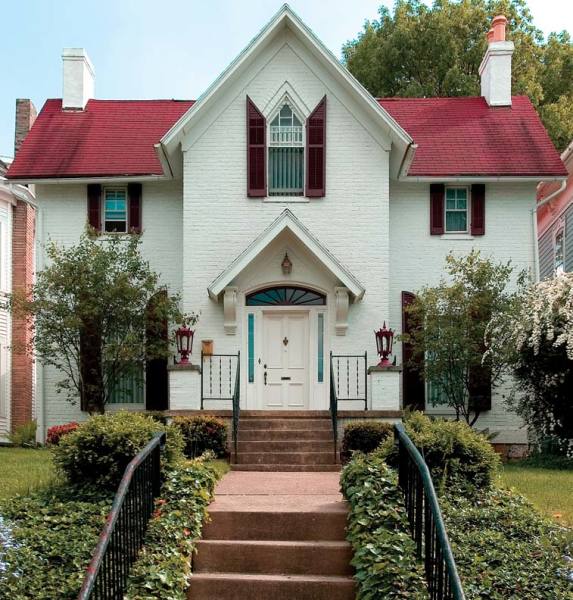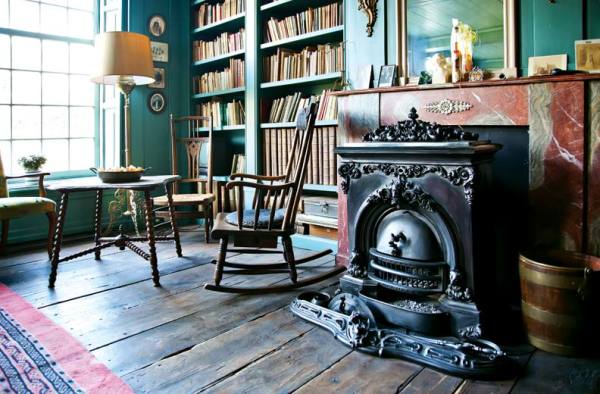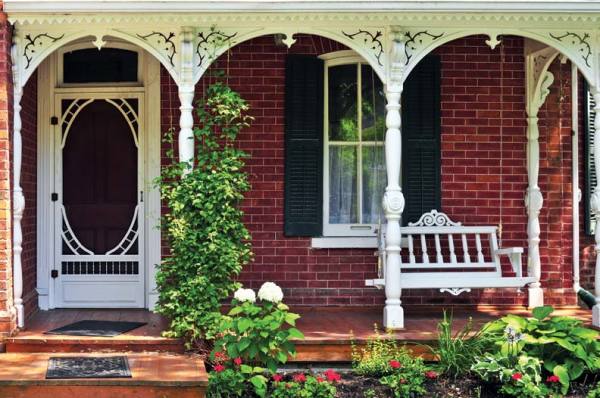The day you set foot into your first old house, you’re stepping into the pages of an instruction manual. Every old-house owner becomes a student in the school of practical, on-the-job learning. Rarely does a month go by in which some sort of problem doesn’t need to be figured out. But in the process of tackling these dilemmas, you’re becoming a human compendium of knowledge about how vintage houses work. And not all lessons have to be learned the hard way. The wisdom of those who have gone before can be invaluable for sidestepping some common issues. With that in mind, here are a couple dozen things I wish we’d known when we first moved into our 1898 Folk Victorian.

#1. The previous owners did not have all the answers. Sometimes, they didn’t even have any of the answers. Try to refrain from public displays of bewilderment and dismay at their cluelessness; someday, this will be you, in the eyes of a future owner.
#2. When you find a light or window in an inexplicable location—or missing where one should decidedly be, like our vanished bay window—refer to lesson #1.
#3. Four words: Buy below your means. Restore and decorate that way, too.
#4. Old-house owners are not often the best-dressed people at the party. But when the party is at their house, it’s a really fun time.
#5. Misplaced water + old wood = bad. If you know where the water came from, fix the problem and clean it up. If you don’t? It’s time to do some investigating—and then fix it and clean it up.
#6. When opening up spaces that have been closed a long time—whether pocket doors or attic areas or hidden closets—prepare for bugs that are bigger than your pet hamster. And maybe a bat or two.
#7. If you look carefully, your old house will reveal its design plan to you in the way the sunlight moves through rooms during the day. Pay attention, and learn which spaces the builders envisioned as bedrooms, libraries, kitchens, and nurseries. Rooms meant for children often get cheery morning sun, for example, while a parlor where visitors would sit in the afternoon gets light in those hours.

#8. Gut reaction on wallpaper is what matters most. As with seafood or country music, you rarely learn to like it.
#9. Shutters look sort of silly if they are obviously non-functional (i.e., too small to cover the window opening). No one will hoot and point fingers if you remove yours. Truly.
#10. Deciding what color to paint your home’s exterior is important: In essence, you’re showing the world your taste. But don’t stress about the commitment—it’s not marriage or a prison term.
#11. Sawdust that you can’t explain—anywhere, at any time—is not a good thing. At best, it means decay or dryness; at worst, it could be a sign of invading animals or insects.
#12. Get small containers of extra paint for touch-ups when you buy the original gallons. Batches never match exactly.
#13. Lighted lamps in old-house windows say “home” in a way nothing else can.
#14. Other old-house owners will not laugh at you if you name your house. So go for “Lilac Lane,” “Land’s End,” “Maple Hill”—whatever suits your fancy.
#15. Save shingles that drop off into your yard. You will need them later, even if you think you won’t.
#16. It’s cheaper to have enough reconstructed molding cut to cover the whole house than to order small batches a room at a time, even if you simply store a good portion of it for later needs. And make sure to write down the stain formula you use on replicated molding—you will forget those details.

#17. Porches are never a mistake. Never tear them off, and whenever possible, rebuild them.
#18. Testing swatches of paint color on the wall is not a waste of time or money. You will change your mind, and it’s better than repainting the entire room.
#19. Serve lunch to your contractors on their first and last days on the job. Eat with them. These are the people who can determine, to a large extent, whether your old-house ownership becomes a chore or a pleasure.
#20. Mail thank-you notes when somebody goes to extra lengths to help you out with old-house questions and dilemmas. That maintains the reputation of old-house owners as nice sorts, and it will pay dividends down the road.
#21. Wood floors look very nice at all times of the year, but especially at the holidays. They are worth the time and money you spend refinishing (and cleaning and polishing) them—and you will never regret it.
#22. Every room in an old house contains at least one flaw, be it in the moldings, the paint, or the floor finishing. Nobody will notice but you. Relax.

#23. Old-fashioned bathrooms are best for old houses. You don’t need four sinks or a roller-rink-sized ceramic floor. People survived before the age of palatial johns, and they still do.
#24. The day you’ve lived in your old house longer than any other house you’ve lived in is a very special day. So is the day you’ve lived in your old house longer than the original owner.
#25. When a house has a big birthday, you celebrate. 75? 100? 150? If you’re there for it, make it a moment to remember.
Online exclusive: Share the lessons you’ve learned from your old house in our special forum.







